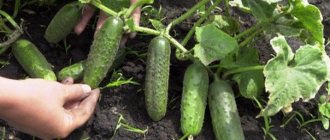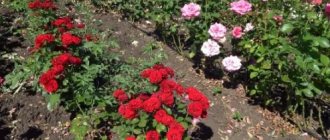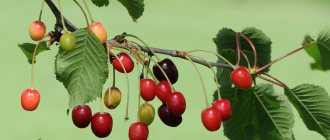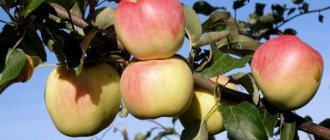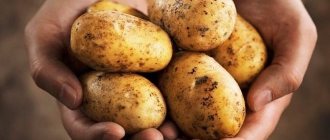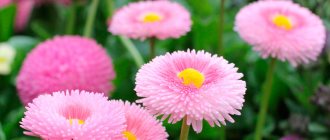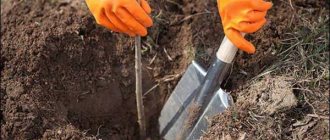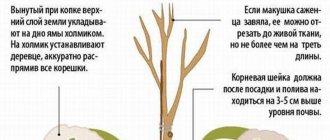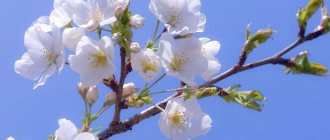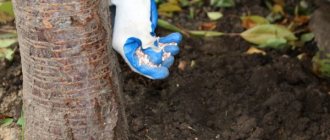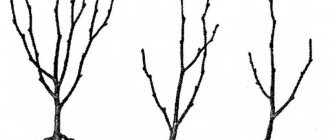Features of selection of winter-hardy cherries
Research has been carried out for a long time and various types of this heat-loving crop have been crossed to make it possible to grow it in regions with unfavorable weather conditions. Breeders managed to develop dozens of new species for central Siberia.
There are varieties that are highly resistant to frost, but during flowering and frost, the buds freeze and the harvest is lost. But there are also those that can withstand a decrease in temperature at any stage of development. Both types are used for planting in regions with different weather conditions. For example, Tyutchevka will perfectly tolerate winter with a temperature of -30 ° C and spring return frosts, and Bryansk pink can shed inflorescences if at the time of their formation the thermometer drops below 0 ° C.
Attention! For the first time, it was possible to develop cherries with resistance to severe frosts in St. Petersburg in the last century. Therefore, the most common varieties are called Leningrad Black and Yellow in honor of the city.
Rules for caring for cherries in Siberia
After planting cherries in Siberia, from the first days you should take care that the plant takes root and adapts to the environment. To do this, follow all recommendations for caring for a fruit tree.
How often to water
The frequency of watering depends on the weather conditions of the northern regions: during the dry season it should be carried out regularly to maintain normal soil moisture. In hot weather, actively water the plant at the time of flowering and 3 weeks before the fruit begins to form.
What to feed for growth and fruiting
Growing cherries in Siberia involves applying a large amount of fertilizers, namely:
- complex fertilizer in the spring, for example nitrophoska or ammophoska;
- at the end of June superphosphate;
- in the first ten days of August potassium monosulfate;
- in August no more than 150 g of wood ash.
Following the fertilizing schedule for fruit-bearing cherries will help you obtain the desired harvest in large volumes.
Instructions for forming a tree
Pruning cherries that grow in Siberia has certain peculiarities. The purpose of pruning is to limit the growth of shoots, so you need to form a low trunk and a compact crown to make it easier to wait out unfavorable conditions. Do not cut off the ends of the branches; the fruits will appear on them. It is recommended to remove only lateral branches.
The crown of cherries growing in Siberia is formed in several ways:
- in the form of a bowl from one tier, so that the main trunk is not noticeable, but at least 5-6 branches stand out;
- tiered-sparse form, which is characterized by the laying of three tiers of skeletal branches at a distance of 60 cm;
- in the form of stele.
Timely removal of branches that grow inside the crown is necessary so that the plant gives all its nutrients to the formation and saturation of fruits, and not to the growth of non-functional shoots.
Proper preparation for winter is the basis for the survival of cherries
The first winter is the most critical period for cherries; it is during this period that the risk of death increases. In the conditions of Siberia, where winters are very harsh, it is worth paying more attention to preparing the fruit tree for wintering and making it easier for it to pass through this difficult time of year. To do this you need:
- In August, bend the lower branches.
- Do not allow a large number of shoots to form in the autumn and cut them off in time.
- Make sure that the crown is completely free of leaves. Otherwise, defoliate by spraying the plant with urea or copper sulfate to speed up leaf fall.
- Conduct mass watering in late September. Pour about 30 liters of water under one fruit tree.
- Build a shelter using film, frame, spruce branches, and fill the structure with plenty of snow.
Important! To protect the plant from rodents, the trunk and base of the skeletal branches should be whitened. The composition of the whitewash should differ in the content of clay, hot pepper powder, mullein, and animal hair. .
Fruit differences
Among the winter-hardy varieties there are representatives with different berry characteristics. Based on your own wishes, you can choose pink, red or yellow. Also with the size of the fruits - from small ones - 2-4 g, to the largest - 12 g each. Another difference between all frost-resistant varieties is good stone separation. Of all the types, only Iput can cause trouble when preparing the harvest for conservation; in the rest, it is possible to separate the stone from the pulp almost “dry”.
Characteristics of berries:
- Fatezh – yellow-orange 4-4.5 g dense and juicy dessert type.
- Tyutchevka is dark garnet, elastic, sweet. Weight 5-5.5 g.
- Iput is a bright scarlet berry, soft and juicy inside, weighing 5.5 g.
- Veda - fruits with an average weight of 5g, burgundy color.
- Revna is a glossy dark wine-colored berry with a hard consistency inside. Average weight 4.5-4.8 g. High shelf life and transportability.
Pros and cons of Siberian cherries
An undeniable advantage of winter-hardy varieties is their high immunity to the main common diseases of cherry. Most species do not affect coccomycosis, moniliosis and clasterosporiasis. The harvest usually tolerates transportation and storage well and does not lose its presentation.
The main disadvantage of most winter-hardy varieties is self-sterility. To pollinate inflorescences, there must be at least one more tree of a suitable species within a radius of 50-100 m. Also, in rainy spring and summer, the berries may crack, which spoils the presentation and reduces storage time.
Attention!
It is better to buy seedlings from local nurseries with a good reputation, which zone their products. In this case, the seedling variety will be suitable for planting in all respects.
Diseases and pests (treatment, prevention)
Cherries are resistant to diseases and are rarely attacked by parasites. Diseases and insect pests more often affect plantings with weakened protective forces. Diseases that threaten the fruit tree include:
- Cytosporosis. First of all, it affects shoots and branches. Roots and fruits are rarely infected. The bark of diseased trees becomes brittle and a brown tint appears. The disease can easily destroy all young plants.
- Clusterosporiasis (hole spotting) is a dangerous disease. In early spring, characteristic brown spots appear on the foliage.
- Coccomycosis (reddish-brown spotting) is a fungal pathology that mainly affects green mass. The leaves acquire a red-brown color. In late varieties, coccomycosis can also affect fruits.
- Fire blight is an infection that causes changes throughout the tree. The main symptom is a sticky bark covered with a white exudate that then turns brown. Leaves, shoots, flowers, and fruits are also affected.
- Moniliosis (fruit rot) is a fungal disease of stone fruit crops. Young leaves and annual shoots suddenly turn brown and dry out, but hang on the tree for a long time.
To protect the tree from diseases, special preparations are used. In early spring, the planting is treated with copper sulfate. At the beginning of flowering, use Horus (fungicide). After fruiting, the tree is treated with Actellik (insecticide).
Brown mites, cherry aphids, cherry weevils, roseate leaf rollers, cherry sawflies, and western gypsy bark beetles are pests whose large numbers cause rapid leaf fall. Control measures: spraying trees during bud break with Fufanon, Fitoverm, Kemifos or Karbofos.
Pollinator varieties for common frost-resistant cherries
The harvest of all garden crops depends on how well pollination occurs during the flowering period of the tree. Sweet cherries are often self-sterile, so there should be at least two, or even three different varieties in one area or in neighboring ones. But even here you cannot plant the first seedling you come across. Each species has its own pollinators. If others are present, the harvest is scanty or absent altogether. For full pollination, trees should bloom at approximately the same period or the pollinator variety should bloom a little earlier.
Tyutchevka, Ovstuzhenka and Iput are suitable for almost all other frost-resistant varieties. They are considered universal and are in demand. Also for Veda the pollinator is Leningrad sulfur and Bryanochka, for Revna - Rechitsa, for Iput - Raditsa and Revna, for Ovstuzhenka - Rechitsa.
Planting cherries in spring in the Urals
Taking into account the harsh climatic realities, planting cherry seedlings in spring in Siberia is the best option. It allows young fruit trees to gain strength during the spring-summer period and prepare for the first winter in new conditions.
Interesting! There is an opinion that in those places where dog rose (Rosa canina) naturally grows (blooms annually and successfully bears fruit), sweet cherries will also feel good there.
How to plant cherries correctly? In Siberia in the spring, the threat of return frosts persists until the beginning of June, so the purchase of seedlings is usually planned for May. Seven tips on which cherries to plant in Siberia and how to choose seedlings with ACS:
- The roots should be well developed and free of growths and swellings.
- The bark on the trunk is smooth, without spots or scales. If it is wrinkled, then most likely the seedling is overdried and it is impossible to plant it in Siberia with minimal losses.
- The crown of the seedling should consist of 3-4 branches, each 30-40 cm long.
- Damage to the buds in the crown area is unacceptable, otherwise the further development and formation of cherries will be difficult.
- Young cherries adapt to new conditions faster than adults, so it is preferable to plant 1-2 year old seedlings.
- Cherries that are planted in the spring must have a trunk diameter of at least 1.5 cm.
- In order to be able to subsequently cover the cherries for the winter, at least in the first two years of life, it is preferable to plant a plant with a low trunk or grown in a creeping (stale) form.
Which cherries to plant in Siberia, or how to choose the right rootstock? The climate of Siberia is harsh for the traditionally southern crop, so winter-hardy rootstock is especially important for it. The best results of frost resistance are shown by cherries grafted onto cerapadus (an interspecific cherry-bird cherry hybrid) and onto seedlings of common cherries of Central Russian varieties (usually Vladimirskaya and Shubinka are used). VSL-2 is considered the best clonal rootstock for cultivating cherries in the stale form; it reduces the height of grafted varieties by 50%.
Siberian gardeners with grafting skills can plant local forms of wild cherries (seedlings or shoots) for rootstocks. Although there are disagreements regarding the advisability of using steppe cherry (Prunus fruticosa) as a rootstock. Well, purchasing cuttings of the required varieties for scions today is not a problem.
Landing place
The choice of place where to plant a cherry seedling in Siberia should be approached carefully, because... This will be half the success of growing cherries in Siberia.
- The site must be protected from cold air masses and drying winds. This could be a natural barrier - a hillside, a dense wall of trees in a nearby forest. Or artificially created - a stone wall of a building or a reliable high fence, a compacted hedge.
- In the area where it is planned to plant cherries, there should be no local depressions in the relief - holes, ditches, depressions, depressions in which water can accumulate during the spring melting of snow. Cherry does not tolerate the soaking of the root collar and the annular heating of the bark of the trunk; for it this is certain death. Low areas are dangerous due to the accumulation of cold air masses, which is especially destructive during the flowering period.
- A slight elevation or a southern slope (its upper or middle part) with a steepness of no more than 5-8° are the optimal comfort zones. It’s good if there is a body of water nearby, it softens the climate
- You cannot plant a plant in poor sandy, waterproof clay soil or on peat bogs and expect active growth and fruiting from it. It will hurt and slowly wither away. If the soil on the site does not allow planting the desired crop, then it is worth completely replacing the soil in the planting hole, taking into account the growth of the root system of an adult tree.
- Groundwater should not be closer than 2 m from the surface of the earth. The roots of the cherry tree will constantly suffer from high humidity, and the trunk will suffer from gum growth. In both cases, this will lead to the death of the plant. In such circumstances, you can try planting cherries on a small mound, and placing a sheet of slate or galvanized sheet at the bottom of the hole.
Attention! It is unacceptable to plant a cherry tree in the shade. This originally southern culture should receive maximum solar heat and light.
Soil for planting
To successfully plant a plant in Siberia, you need to remember that cherries love:
- well-drained soils – loose and permeable;
- fertile;
- retaining moisture, i.e. moisture-intensive;
- According to the type of soil, cherries prefer chernozem, sandy loam and medium loam, but it is possible to plant it on sod-podzolic and gray forest soils.
- the required pH level is not lower than 5.5.
Important! Before planting cherry crops in Siberia, acidic soils need to be limed. For this, dolomite flour is used - it does not burn the roots of plants even when applied in the spring (500 g per 1 m²).
Siberia requires that a planting hole be prepared in the fall, but it cannot be left empty for the winter. In spring, the hole will quickly fill with melt water, which will not go away soon, especially on dense soils. Therefore, in the fall, a dug hole (diameter up to 80 cm and depth up to half a meter) with steep walls is filled with fertile soil, seasoned with fertilizers. And in the spring, only a small depression is made for the tree in loose soil according to the size of the root system.
To plant a cherry seedling in Siberia you need to add to the hole:
- 1.5-2 buckets of humus or matured compost (the amount of organic matter can be up to half of the total volume of soil);
- 150 g superphosphate;
- 50 g of potassium sulfate;
- 1 liter jar of ash and 1 cup of crushed eggshells;
- bucket of sand (on hard ground).
Attention! It is important to plant the seedling so that the root collar is not buried and is located flush with the surface of the ground or is slightly higher (3-5 cm). And so that the tree can be easily bent to the ground before winter shelter (or to maintain its slate shape), it must be planted in a hole at a slight slope.
Caring for cherry seedlings in Siberia
The young tree needs to be planted (it’s better to do this together) and be sure to tie it to a peg. At the end of summer, the garter is loosened, because cherries grow quickly. Regardless of the weather and soil moisture, 1-2 buckets of water are poured under the seedling. Cherries do not need fertilizers in the year of planting, so caring for the crop in Siberia includes regular watering, loosening and keeping the tree trunk free from weeds. Mulching with straw or hay will help maintain optimal soil moisture and inhibit the growth of weeds.
Preparing for winter
The first winter in Siberia is a crucial period in the life of the cherry tree, and a severe test that will reveal most of the mistakes and shortcomings. What to do:
- Start bending the lower branches in the second half of summer.
- It is important to prevent the formation of autumn shoots, and when growths appear in August-September, they need to be trimmed in a timely manner.
- Before covering, the crown of the cherry tree should be free of leaves. If leaf fall is delayed, then it is necessary to carry out defoliation - spraying the crown with urea or iron sulfate to speed up the fall of leaves.
- The first snows in Siberia fall in October, so moisture-recharging irrigation is carried out at the end of September. You need to pour at least 30 liters of water under one tree.
- The first shelter for cherries in Siberia can be arranged in different ways: using film and non-woven fabric, frames and spruce branches. But in any case, the final step is to cover the erected structures with snow, which is why it is so important to plant seedlings in places convenient for their hilling in case of poor snow cover.
Attention! In late autumn, the trunks and bases of skeletal branches of mature trees that are not covered need to be whitened. The whitewash should contain: clay, mullein, animal hair and hot pepper in powder form (as a rodent repellent).
Classification of frost-resistant cherries
Due to the climate in the local region, it is important to choose a variety that will bloom and bear fruit at a favorable time. Therefore, for Siberia, Leningrad, Moscow and southern regions, you always need to choose completely different types.
Classification by maturity:
- Early. By mid-June it is pleased with the fruits - Chermashnaya, Fatezh, Ovstuzhenka.
- Average. Beginning of July – Teremoshka, Rechitsa.
- Late. The harvest appears at the end of July or beginning of August - Bryanochka, Bryanskaya pink, Veda, Tyutchevka.
There are three main types of cherries based on the color of the berries. Red can be very dark or bright, with specks, glossy or matte (Teremoshka, Rechitsa). Yellow is considered a fresher cherry with high sweetness without sourness, sometimes there are pink impurities (Chermashnaya, Leningradskaya yellow, Zhurba). The third type is pink cherry (Bryanskaya, Zhemchug)
The height of crop trees in regions with harsh winters never exceeds 2.5-3 m. This is due to the peculiarities of the movement of cold air masses in winter and spring. Therefore, they are not classified into separate groups.
The best varieties for the Siberian climate
The efforts of breeders in creating new hybrids were aimed at increasing the winter hardiness of flower buds. The possibility of growing cherries in the harsh conditions of Siberia depends on this.
Early varieties
Early varieties of cherries, the ripening period of which falls in mid-June, include:
- Here we go.
- Ovstuzhenka.
- Red hill.
- Chermashnaya.
- Symphony.
- Fatezh.
Most of them were bred thanks to Bryansk selection, where a team of scientists led by M.V. Kanshina was engaged in this.
Mid-season crops
Cherry varieties that ripen in early July:
- Rechitsa.
- Teremoshka.
- In memory of Astakhov.
These recommended varieties for planting in Siberia showed the most encouraging results during breeding, since they were distinguished by the ability of the buds to withstand temperature drops down to -35 degrees.
Late ripening varieties
By mid-July the following cherry varieties will be ripe:
- Tyutchevka.
- Bryanochka.
- Veda.
- Revna.
- Bryansk pink.
- Odrinka.
The list of these cherry varieties will decorate the gardens of Siberia.
Frost-resistant varieties
Before planting a fruit tree in a sharply continental climate, it is worth considering all the risks. Frosts reaching record levels can negatively affect the plant. When choosing, you need to take into account numerous microclimate factors. Siberian gardeners strongly recommend giving preference to frost-resistant varieties of cherries, which are publicly available in regional nurseries.
Characteristics of culture for different regions
The selection of cherries in areas with an unfavorable climate should be carried out much more carefully than in the southern regions. Here, the most important criterion is winter hardiness. For example, for the Moscow region, medium-resistant varieties are suitable, and for the middle zone closer to Siberia, the most winter-hardy varieties of delicious cherries will be needed.
For the Moscow region and Moscow region
Although the region is not characterized by severe frosts, as in the northern regions, it is still important to choose varieties with high resistance to cold. Particular attention should be paid to the ability of flower buds to withstand spring frosts.
Winter-hardy cherry varieties suitable for the Moscow region:
Harvest and storage
Harvest dates vary depending on the variety. According to general storage recommendations, ripe fruits should be kept in the refrigerator in the vegetable compartment. In such conditions, the berries will retain their taste for up to 5 days.
Important! Berries affected by rot are thrown away immediately, since they cannot be stored together with undamaged ones. Otherwise, the entire crop may rot.
Cherry trees can be grown in Siberia if you choose the variety responsibly, even if you planted a winter-hardy variety, taking into account the nuances of planting and caring for the crop in the local climate. Only in this case can we expect successful fruiting of plants.

